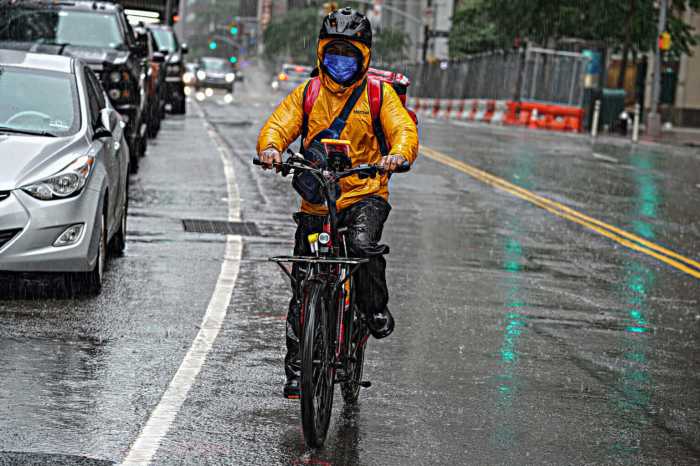
Ground was broken Thursday on Freshkills Park, a major step in transforming what was once the world’s largest garbage dump into a vast green space nearly three times the size of Central Park.
Parks and Sanitation Department crews began work on a 21-acre area of North Park, the first of five sections of Freshkills that will open in 2020, part of a laborious reclamation project dating to 2001, when the dump was first closed. Before then, it was an olfactory nightmare for anyone traveling on the busy roads near the West Shore of Staten Island. The stench reached residents’ front doors and wafted over backyard swimming pools.
“I lived on the North Shore, but believe it or not there was a time when you could smell it, the landfill would float that far,” said Parks Commissioner Mitchell Silver. “When I went to the Staten Island Mall, it became so powerful. You know how people say, ‘You get used to sounds or smells?’ No, that was a smell you could never get used to.”
Now, what’s left is the smell of fresh mulch.
Each section of the park will offer a variety of uses and themes inspired by the area’s natural wetlands and woodlands. The entire park will be about 2,200 acres when it fully opens in 2036.
North Park, a $29.7 million project, will mostly have meadows of natural grasses. There will be pathways, a birding observation tower, a picnic lawn, a waterfront overlook deck, a forested plateau and composting and bicycle repair stations.
“It’s going to be about the grasses, the meadows and the views,” Silver said. “The views, first and foremost, are going to be magical for people here on Staten Island. People have never seen these views before to picnic, to walk, to bike, to run . . . it’s about getting a feel of being in this park.”
This is not the city’s first redesign of space along the periphery of the park, but North Park will be the first interior section of the park to open over complex environmental management systems. A multi-layered “cap” of different types of soils and synthetic materials works to help separate the landfilled waste from the environment.
Eloise Hirsh, the Freshkills Park administrator, assured that work was being “done under the strictest regulatory environment.” Freshkills Park Department is holding a series of events to give visitors a glimpse of the grounds, and to try to cut through the stigma of a former landfill.
“When people come, they become believers,” Hirsh said, noting that North Park was selected to open first because it provided the fewest complications.
“We wanted to cut our teeth on an initiative project that would be the clearest and best way to set some protocols for how we’d go about building further on the landfill,” she said.
The city now ships its waste to various sites in New Jersey, Virginia and South Carolina, as outlined in the city’s 2006 Solid Waste Management Plan. The shift has allowed Freshkills to accommodate wildlife once sparse on Staten Island, including cricket sparrows, ospreys and eagles.
“What you’re seeing here is this attraction of wildlife back to this area of Staten Island. You see more birds than we have ever seen before,” said Sanitation Commissioner Kathryn Garcia. “Nature is coming back to this part of the Island.”
To further tap into the potential of the park, Borough President James Oddo has been pushing the administration to work on public-private partnerships to bring more programing and activities. He has also advocated for the building of roads through the park to alleviate island traffic.
Silver said Freshkills Parks is open to public-private partnerships, and that it recognizes the need for roads “for access, as well as transportation for Staten Islanders.” But he said the park’s traffic would not resemble that in Central Park or Prospect Park.
“It’s not going to be what you see in Central Park. In both Central Park and Prospect Park we’re limiting car traffic because we don’t want to have the intersection between cars and pedestrians,” he said. “So that’s still in the works, and we don’t have any solid plans as to what the road network will look like.”



































